Camp Lookout, Valencia, Negros Oriental, Philippines
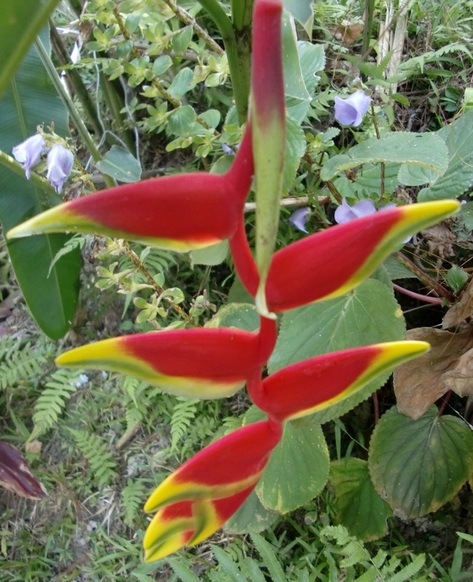
hanging lobster claw
Camp Lookout
There are hundreds of Heliconia species, most of which are native to Central and South America. The Helconia rostrata, one of the most common Heliconia, is native to Bolivia, Columbia, Peru, and Ecuador. I wonder if the Spanish brought it over in the 17th or 18th century? Maybe an eccentric botanist in Lima hopped a ship to Acapulco, Mexico with some rostrata rhizomes and then stowed away in the galleon of one of the many ships carrying goods between Acapulco and Manila. I'm just imagining, but I wouldn't be surprised if it's true.
More info: Hawaiian Plants & Flowers
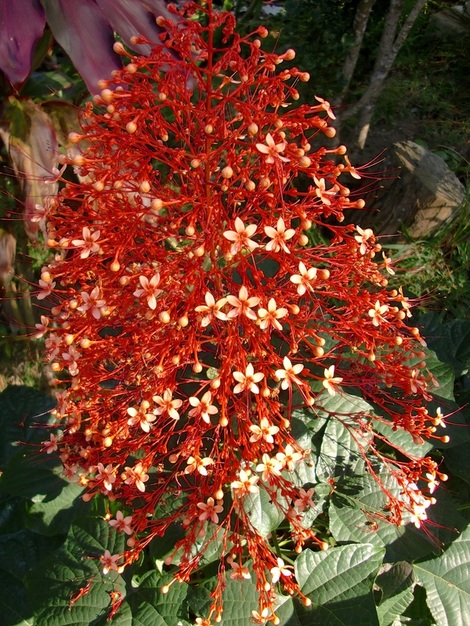
pagoda flower
Camp Lookout
This burst of color in the shape of a big cone is native to Asian tropics. In Western scientific study, it "was first described in 1767 by the 'father' of modern biological nomenclature--the Swedish botanist, Carl Linnaeus. The species epithet refers to the large 'paniculate' clusters of flowers (inflorescences), the feature which makes this such a visually-striking plant."
More info: Kew Royal Botanic Gardens
More info: National Tropical Botanical Garden
More info: Ray Baker and Lyon Arboretum, Univ. of Hawaii
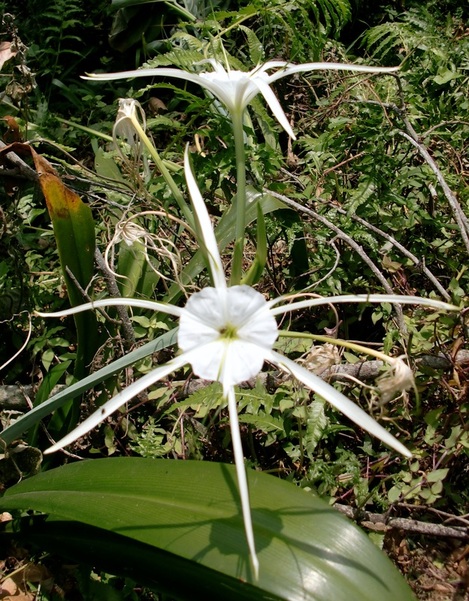
spider lily
Camp Lookout
This lovely was found just hanging out la-dee-da along a walking path that the local residents take up and down the mountain. (The paved road goes zig-zag up and thus is longer.)
There appears to be about twelve different things going on with this flower's design, but it all comes down to one purpose: come and spread my pollen.
More info: Encyclopedia of Life
Camp Lookout
More info: Missouri Botanical Garden

crown of thorns
Camp Lookout
This thorny plant is not a cactus; it's a succulent. Although the mottled flowers and menacing stems don't have the delicate design of the spider lily or the flashy color of the Heliconias, it's a popular garden plant. After noticing it at Camp Lookout, I came home to realize I've been walking right by a bunch of these blooming in planters in front of our neighbors' homes. My new motto: Stop and smell the Euphorbia! Ouch.
More info: Missouri Botanical Garden
Camp Lookout
Camp Lookout (photos 1-5) Dumaguete garden (photos 6 & 7)
I end with the flower that is everywhere in the tropics. It's not just in gardens, but along roads, in fences and hedgerows, even trying to cover ugly cement walls. It's taken for granted like a Midwestern wildflower, but often the only beauty around. It's a wall of streaming color, a burst of delight. It comes in fuchsia, red, pink, purple, lavender, and white. (I've included the picture of an orange one that I think belongs in this family--if I'm wrong, let me know in the comments, please.) It grows as a tree, a bush, or a vine.
Like many tropical flowers in the Philippines, it is said to be a native of Latin America. It was "discovered" in Brazil by a French botanist in 1768, but, as is often the case, got named for the boss of the expedition. In a surprising historical twist, a female botanist disguised as a man on the trek may have been the true "discoverer." Like many things that become popularized, it's gotten away from the experts, the botanists and exacting classifiers. They can't agree on the number of species anymore because there are so many hybrids--in the wild and in gardens--that science can't keep track.
After our trip to Camp Lookout, we visited a spectacular private garden here in Dumaguete. This home is surrounded by plants of all sizes and shapes, landscaped with the artistry of a master gardener. The only showy flower the gardener grows is a small bush that contains three plants of this genus grafted together: branches of pink flowers, orange flowers, and variegated leaves. In the architecture of her garden, this plant is a flame of beauty.
The grafted bougainvillea bush in the middle of otherwise green is a perfect place to pause: my next post will be about the garden plants of the tropics.

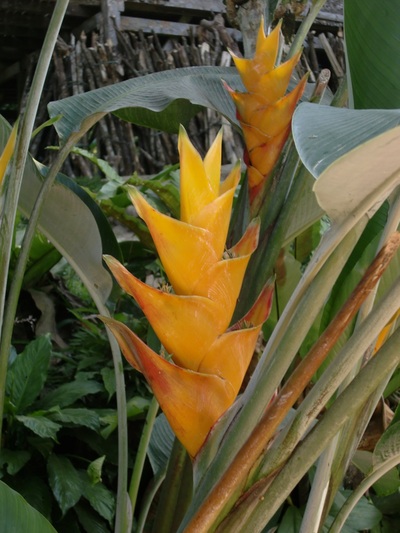

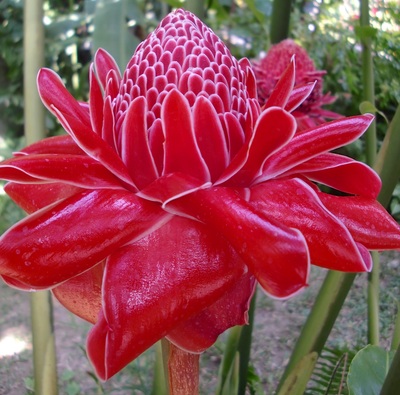
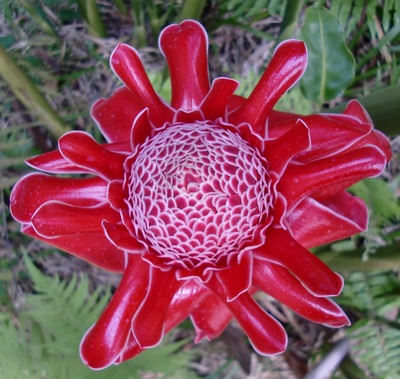
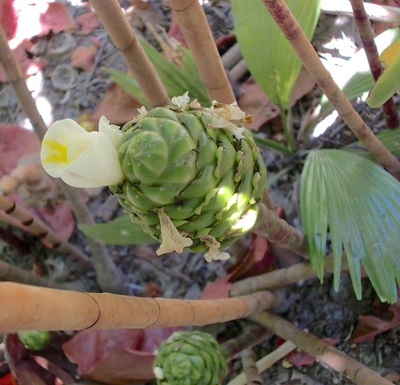


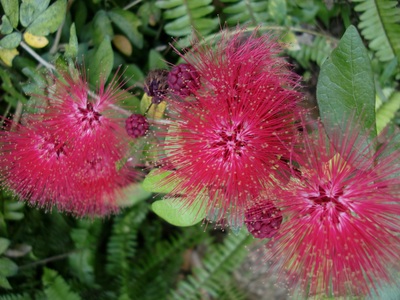
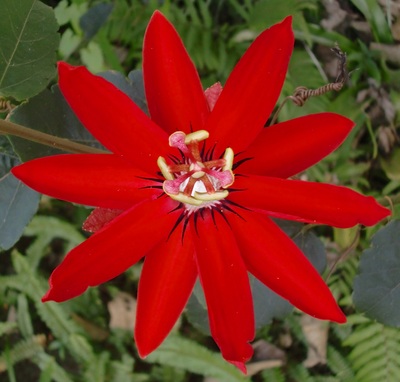
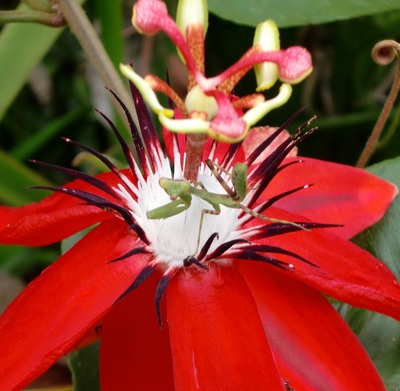

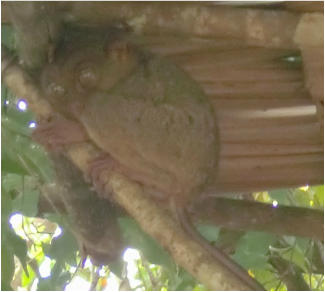
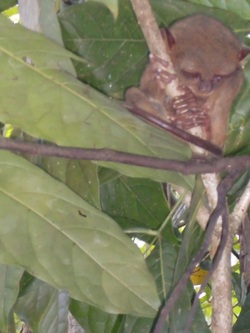
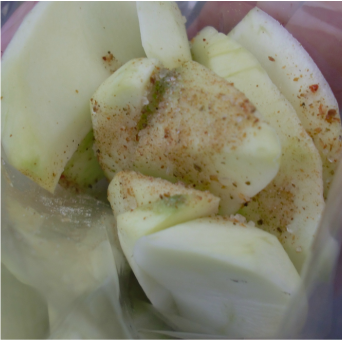

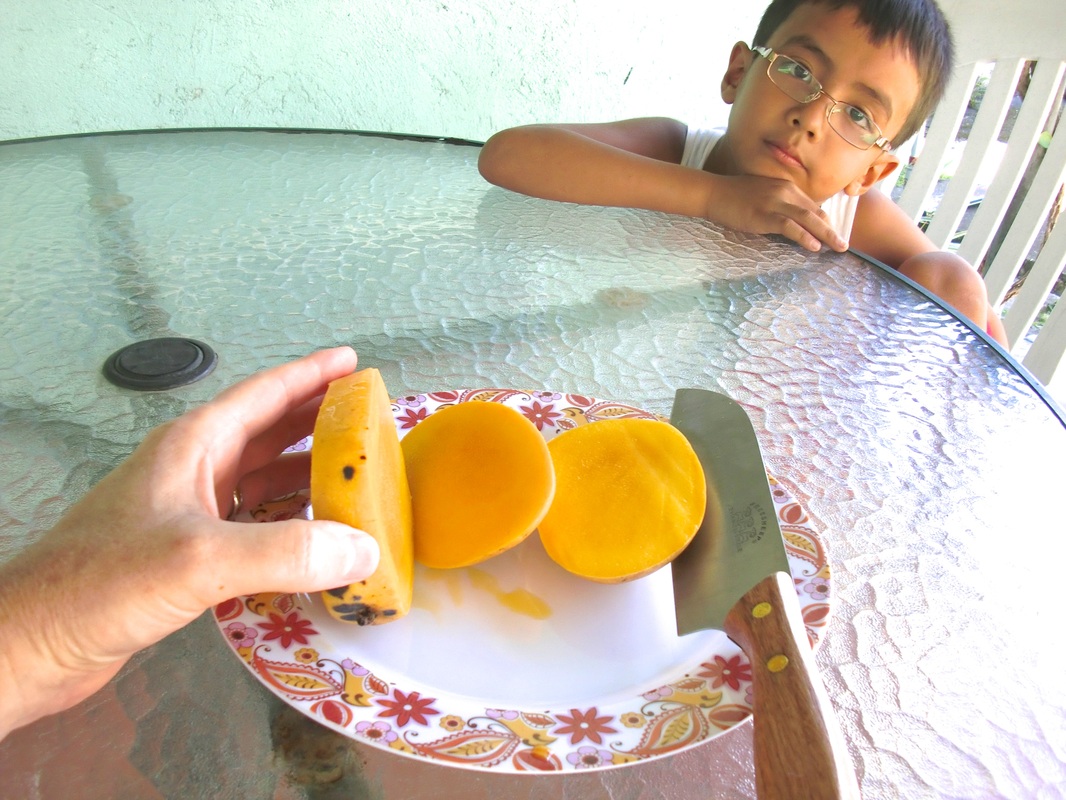
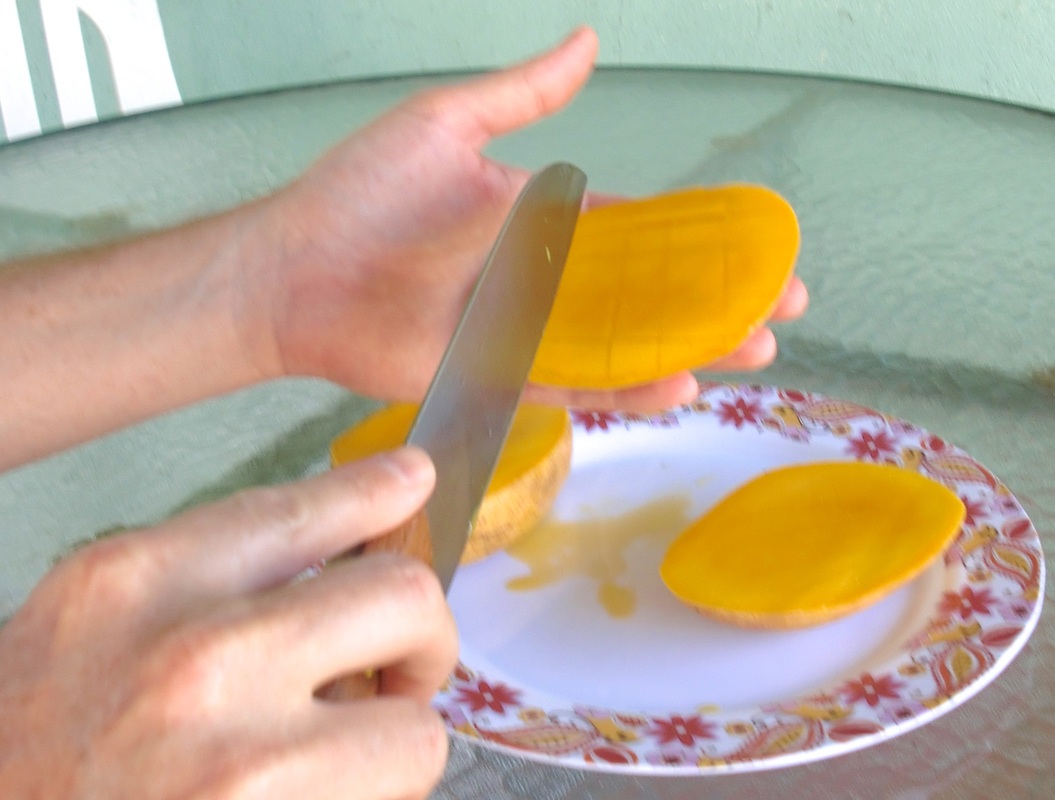
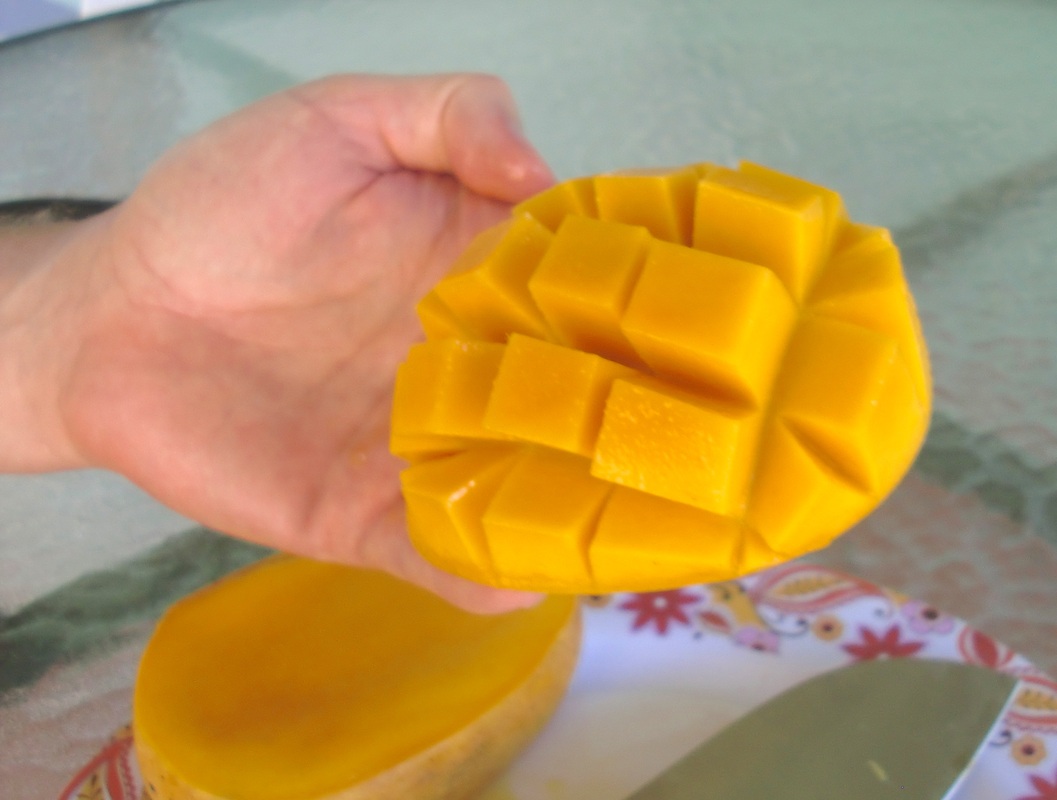


 RSS Feed
RSS Feed